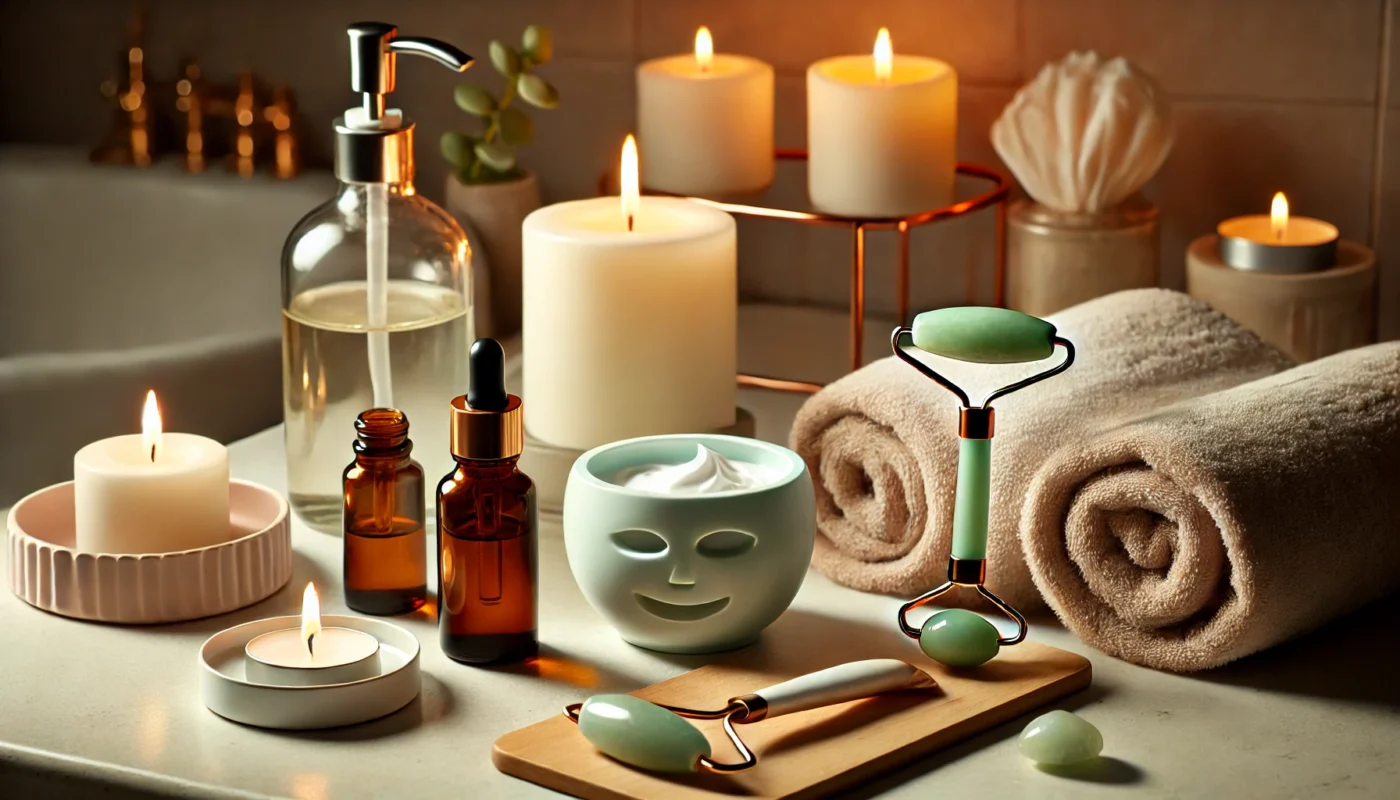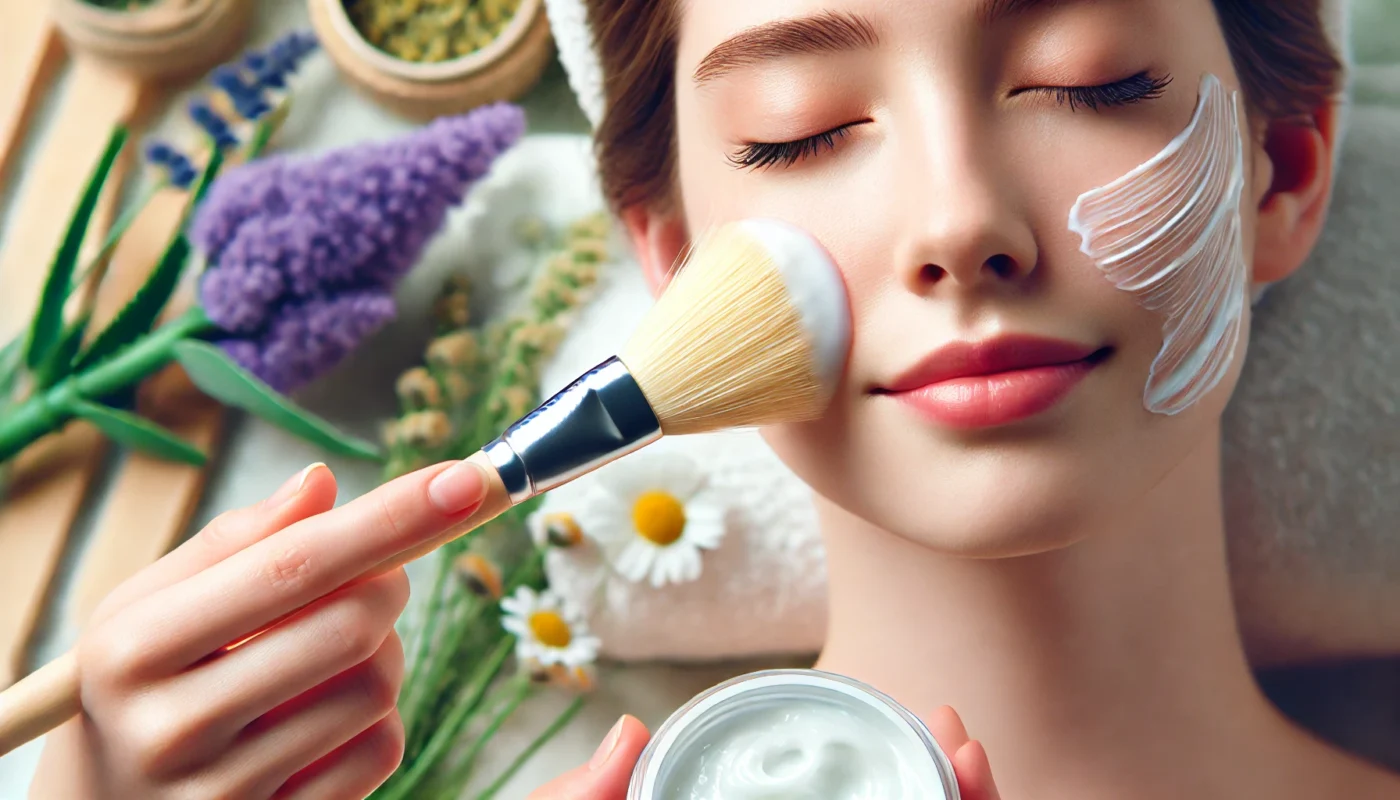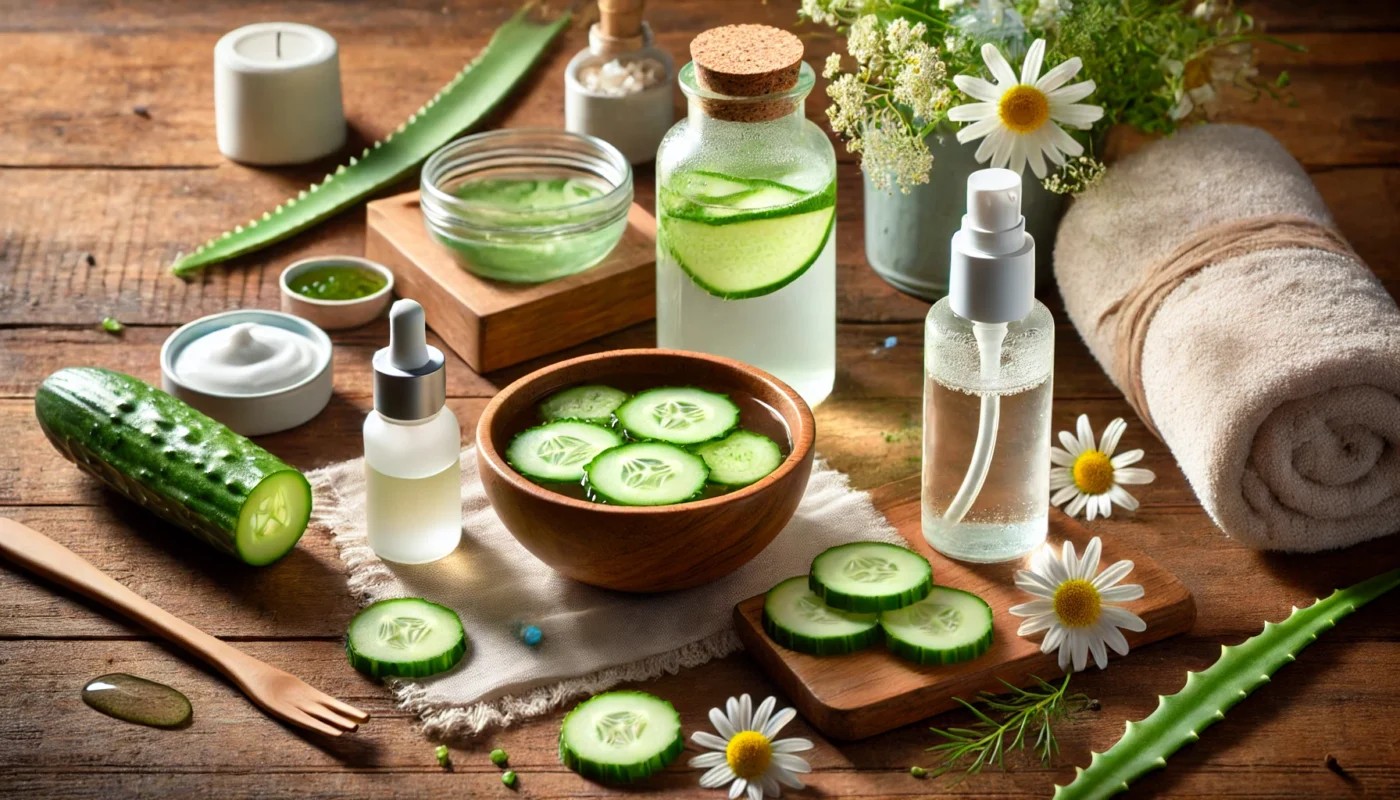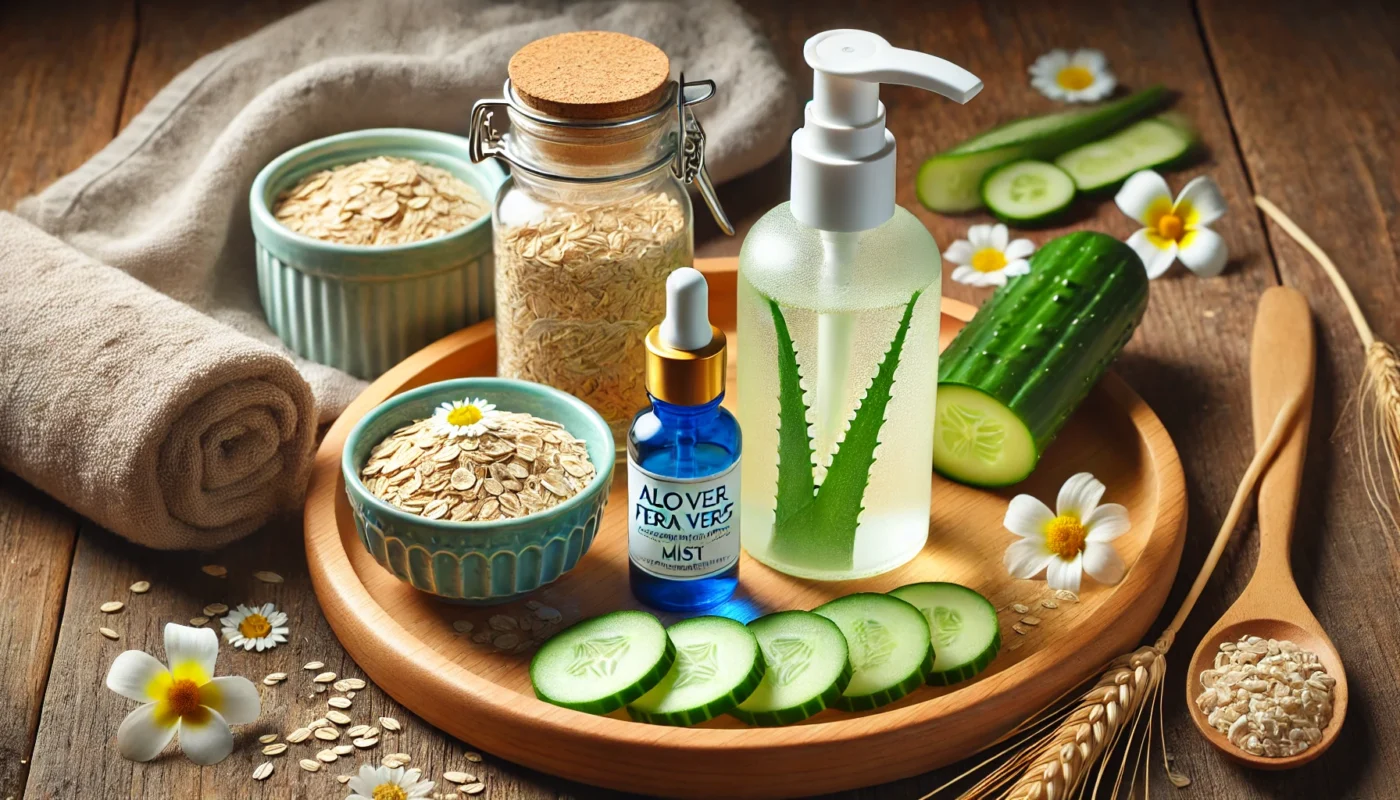Skin irritation manifests in various forms, including redness, itching, swelling, and discomfort. It can result from a wide range of causes, such as environmental pollutants, allergens, or physical abrasions. Understanding the underlying cause of irritation is crucial for selecting the most appropriate treatment method.
You may also like: Common Causes of Delayed Wound Healing
Identifying Common Triggers
Environmental pollutants such as dust, smoke, and chemicals can cause skin irritation. These elements often lead to inflammation, which presents as redness or itchiness. Allergens, including pollen, pet dander, or certain foods, can also trigger similar responses. Identifying these triggers is the first step in preventing and managing skin irritation effectively.
Physical Abrasions and Skin Response
Physical abrasions from clothing, jewelry, or even harsh skincare products can compromise the skin’s barrier. When the skin’s protective barrier is disrupted, it can lead to heightened sensitivity and irritation. Recognizing these sources can help in selecting gentler products or softer materials to minimize irritation.
Skin’s Natural Defense Mechanism
The skin has its own defense mechanisms, such as the production of oils and a slightly acidic pH to fend off irritants. However, when these defenses are overwhelmed, irritation occurs. Understanding how the skin naturally protects itself can guide us in choosing products that support rather than hinder these natural processes.
Fast Healing: Covered or Uncovered?
The Debate: To Cover or Not to Cover
A common question in wound care is whether wounds heal faster when covered or left uncovered. Scientific research suggests that keeping a wound moist and covered can expedite healing by maintaining an optimal environment for cell regeneration and reducing the risk of infection.
Moist Wound Healing Benefits
Maintaining a moist environment can accelerate the healing process by facilitating new tissue growth. This approach prevents scabbing, which can delay healing and increase the risk of scarring. Covered wounds are also less exposed to external bacteria, reducing infection risk.
Risks of Leaving Wounds Uncovered
Leaving wounds uncovered can lead to drying out and the formation of scabs, which can impede healing. Dry wounds are more prone to cracking and reopening, introducing bacteria and increasing the risk of infection. Understanding these risks can inform better wound care practices.
Expert Opinions and Recommendations
Healthcare professionals often recommend covering wounds, especially in environments where contamination risk is high. However, the choice between covering or leaving wounds open may vary based on individual circumstances and the wound’s nature. Consulting with a healthcare provider can provide tailored advice.
Practical Application
For minor cuts and scrapes, using a sterile bandage or dressing can protect the wound from external irritants and bacteria, allowing the body’s natural healing processes to work more efficiently.
Choosing the Right Dressing
Selecting the appropriate dressing is crucial for wound protection and healing. Options range from adhesive bandages to hydrocolloid dressings, each offering different levels of moisture retention and protection. Understanding the different types can help in making an informed choice.
Ensuring Proper Wound Hygiene
Proper wound hygiene is vital in preventing infection and promoting healing. This includes regular cleaning with mild antiseptic solutions and changing dressings as recommended. Consistent care routines support the body’s natural healing processes effectively.
Monitoring Healing Progress
Regular monitoring of the wound’s healing progress is essential. Observing changes in the wound, such as increased redness or pus, can indicate infection and the need for medical intervention. Awareness and timely action can ensure optimal healing outcomes.

Natural Remedies for Skin Healing
Aloe Vera: Nature’s Soothing Gel
Aloe vera is renowned for its soothing and anti-inflammatory properties. Applying fresh aloe vera gel to irritated or wounded skin can provide immediate relief and promote faster healing. Its polysaccharides help in retaining moisture, which is critical for skin repair.
Aloe Vera’s Healing Compounds
Aloe vera contains several compounds beneficial for skin healing, including vitamins, enzymes, and minerals. These components work together to reduce inflammation and encourage skin regeneration. Regular application can significantly improve skin’s recovery rate.
Application Techniques
For maximum benefit, aloe vera should be applied directly from the plant or as a pure gel. Applying a thin layer to clean skin ensures that its active compounds are absorbed effectively. This simple technique can be easily incorporated into daily skincare routines.
DIY Aloe Vera Remedies
Creating DIY aloe vera remedies can enhance its healing effects. Combining aloe vera with other natural ingredients like honey or coconut oil can create a potent healing mixture. Experimenting with combinations can offer personalized skincare solutions.
Honey: The Natural Antiseptic
Honey, particularly Manuka honey, has natural antibacterial properties that can aid in wound healing. It creates a protective barrier and encourages the removal of dead tissue, accelerating the healing process. Applying a thin layer to the affected area can be beneficial.
Manuka Honey’s Unique Properties
Manuka honey is distinguished by its high methylglyoxal content, which imparts strong antibacterial properties. This makes it particularly effective in treating wounds and preventing infection. Understanding its unique properties can guide its use in wound care.
Methods of Application
Honey can be applied directly to wounds or used in combination with dressings. Its thick consistency helps in creating a protective seal over the wound. Learning the correct application techniques can maximize its healing potential.
Honey in Modern Medicine
The use of honey in modern medicine has gained traction, with many healthcare products incorporating it for wound care. Its efficacy in reducing healing time and preventing infection is well-documented. Exploring these products can expand treatment options.
Coconut Oil: Moisturizing and Healing
Coconut oil is another excellent natural remedy due to its moisturizing and antimicrobial properties. It helps to keep the skin hydrated, which can prevent further irritation and support healing.
Benefits of Lauric Acid
Coconut oil contains lauric acid, which has antimicrobial properties that protect the skin from infection. This makes it an effective remedy for treating minor wounds and preventing irritation. Recognizing these benefits can enhance its use in skincare.
Incorporating Coconut Oil into Skincare
Incorporating coconut oil into daily skincare routines can provide long-term benefits. It can be used as a moisturizer, makeup remover, or healing balm, offering versatility in application. Exploring different uses can optimize its benefits.
DIY Coconut Oil Treatments
DIY treatments using coconut oil can enhance its healing properties. Combining it with essential oils or other natural ingredients can create customized skincare solutions. Experimenting with recipes can offer personalized care.

Accelerating Skin Recovery with Lifestyle Changes
Nutrition: Fueling the Body’s Healing Process
Proper nutrition plays a critical role in skin health and recovery. Consuming foods rich in vitamins A, C, and E, along with zinc and omega-3 fatty acids, can support skin repair and reduce inflammation. These nutrients are essential for collagen production and cellular regeneration.
Key Nutrients for Skin Health
Vitamins A, C, and E, along with zinc and omega-3 fatty acids, are vital for skin repair. These nutrients support collagen production, reduce inflammation, and promote cellular regeneration. Including them in your diet can significantly enhance skin health.
Foods Rich in Skin-Boosting Nutrients
Foods like leafy greens, citrus fruits, nuts, seeds, and fatty fish are excellent sources of skin-boosting nutrients. Incorporating these foods into meals ensures a steady supply of essential vitamins and minerals. Exploring diverse recipes can make this incorporation enjoyable.
Supplements and Their Role
While a balanced diet is the best source of nutrients, supplements can help fill nutritional gaps. Consulting with a healthcare provider can help determine the need for supplements. Understanding their role can support informed decision-making.
Hydration: The Foundation of Skin Health
Staying well-hydrated is vital for maintaining skin elasticity and facilitating the healing process. Water helps in flushing out toxins and delivering essential nutrients to skin cells, promoting faster recovery.
Importance of Water for Skin
Water is crucial for maintaining skin’s elasticity and hydration levels. Proper hydration supports nutrient delivery to skin cells, enhancing their function and recovery. Understanding water’s role can emphasize the importance of regular intake.
Hydration Strategies
Developing effective hydration strategies can ensure adequate water intake. This includes setting reminders, carrying a water bottle, and consuming hydrating foods like fruits and vegetables. Implementing these strategies can make staying hydrated easier.
Signs of Dehydration and Skin Impact
Dehydration can manifest as dry skin, flakiness, and reduced elasticity. Recognizing these signs can prompt timely action to restore hydration levels. Awareness of these impacts can motivate consistent hydration practices.
Stress Management: The Mind-Skin Connection
Stress can exacerbate skin irritation and delay healing. Incorporating stress-reducing practices such as yoga, meditation, or deep breathing exercises can have a positive impact on skin health by reducing inflammatory responses.
Understanding the Stress-Skin Relationship
Stress triggers inflammatory responses that can worsen skin conditions. Understanding this relationship can highlight the importance of managing stress for skin health. Recognizing stressors can guide effective intervention strategies.
Effective Stress-Reduction Techniques
Practices such as yoga, meditation, and deep breathing exercises can reduce stress levels. These techniques promote relaxation and reduce inflammation, benefiting both mind and skin. Exploring different methods can identify the most effective approach.
Integrating Mindfulness into Daily Life
Mindfulness practices can enhance stress management by fostering awareness and relaxation. Incorporating mindfulness into daily routines can support overall wellbeing and skin health. Developing a consistent practice can yield long-term benefits.
When to Seek Professional Help
While most cases of skin irritation can be managed with home remedies and lifestyle adjustments, it’s important to recognize when professional medical advice is necessary. Persistent or severe symptoms, signs of infection, or unexplained rashes should prompt a consultation with a healthcare provider.
Recognizing Severe Symptoms
Severe symptoms such as intense pain, swelling, or persistent redness may indicate a more serious condition. Recognizing these signs early can prompt timely medical intervention, preventing complications. Awareness of these symptoms is crucial for effective management.
Signs of Infection
Infection signs include increased redness, warmth, pus, and fever. Identifying these symptoms can indicate the need for professional evaluation and treatment. Understanding these signs can guide appropriate actions.
Consulting with Healthcare Professionals
Seeking professional help ensures accurate diagnosis and treatment. Healthcare providers can offer expert advice and interventions tailored to individual needs. Building a relationship with a trusted provider can support long-term skin health.

Conclusion: A Holistic Approach to Skin Healing
Calming irritated skin and promoting rapid healing involves a combination of proper wound care, natural remedies, and healthy lifestyle choices. By understanding the causes of irritation and implementing these strategies, you can enhance your skin’s ability to recover quickly and maintain its natural resilience.
Incorporating these practices into your daily routine not only helps in addressing immediate skin concerns but also contributes to long-term skin health. Remember, the path to healthy skin is a journey, and with the right tools and knowledge, you can achieve and maintain vibrant, irritation-free skin.
By addressing skin irritation with a comprehensive approach, you empower yourself to take charge of your skin health, supporting your overall wellbeing in the process. With these tips, you’re well-equipped to handle skin irritation effectively, fostering rapid healing and lasting comfort.
Building a Skin Health Routine
Developing a consistent skincare routine can reinforce these strategies. This includes regular cleansing, moisturizing, and protection from environmental stressors. Establishing a routine can support sustained skin health improvements.
Long-Term Benefits of a Holistic Approach
A holistic approach not only addresses current skin issues but also prevents future problems. This comprehensive strategy fosters resilience and vitality in the skin. Embracing this approach can lead to lasting skin health and wellbeing.
Empowerment Through Knowledge
Educating yourself about skin health empowers you to make informed decisions. Understanding your skin’s needs and how to meet them enhances confidence and control. Pursuing continuous learning can keep you updated on the best practices.
Further Reading:
9 Ways to Quickly Calm Red, Irritated Skin—No Matter the Cause
Dermatologists’ top tips for relieving dry skin
Calm Red, Irritated Skin with Expert Tips
Hydration, Skin Health, Water Intake, Dehydration, Stress Management, Mind-Skin Connection, Skin Care Routine, Holistic Approach, Skin Irritation, Professional Help, Natural Remedies, Nutrient Delivery, Wellness, Mindfulness, Skin Resilience
Important Note: The information contained in this article is for general informational purposes only, and should not be construed as health or medical advice, nor is it intended to diagnose, prevent, treat, or cure any disease or health condition. Before embarking on any diet, fitness regimen, or program of nutritional supplementation, it is advisable to consult your healthcare professional in order to determine its safety and probable efficacy in terms of your individual state of health.
Regarding Nutritional Supplements Or Other Non-Prescription Health Products: If any nutritional supplements or other non-prescription health products are mentioned in the foregoing article, any claims or statements made about them have not been evaluated by the U.S. Food and Drug Administration, and such nutritional supplements or other health products are not intended to diagnose, treat, cure, or prevent any disease.

